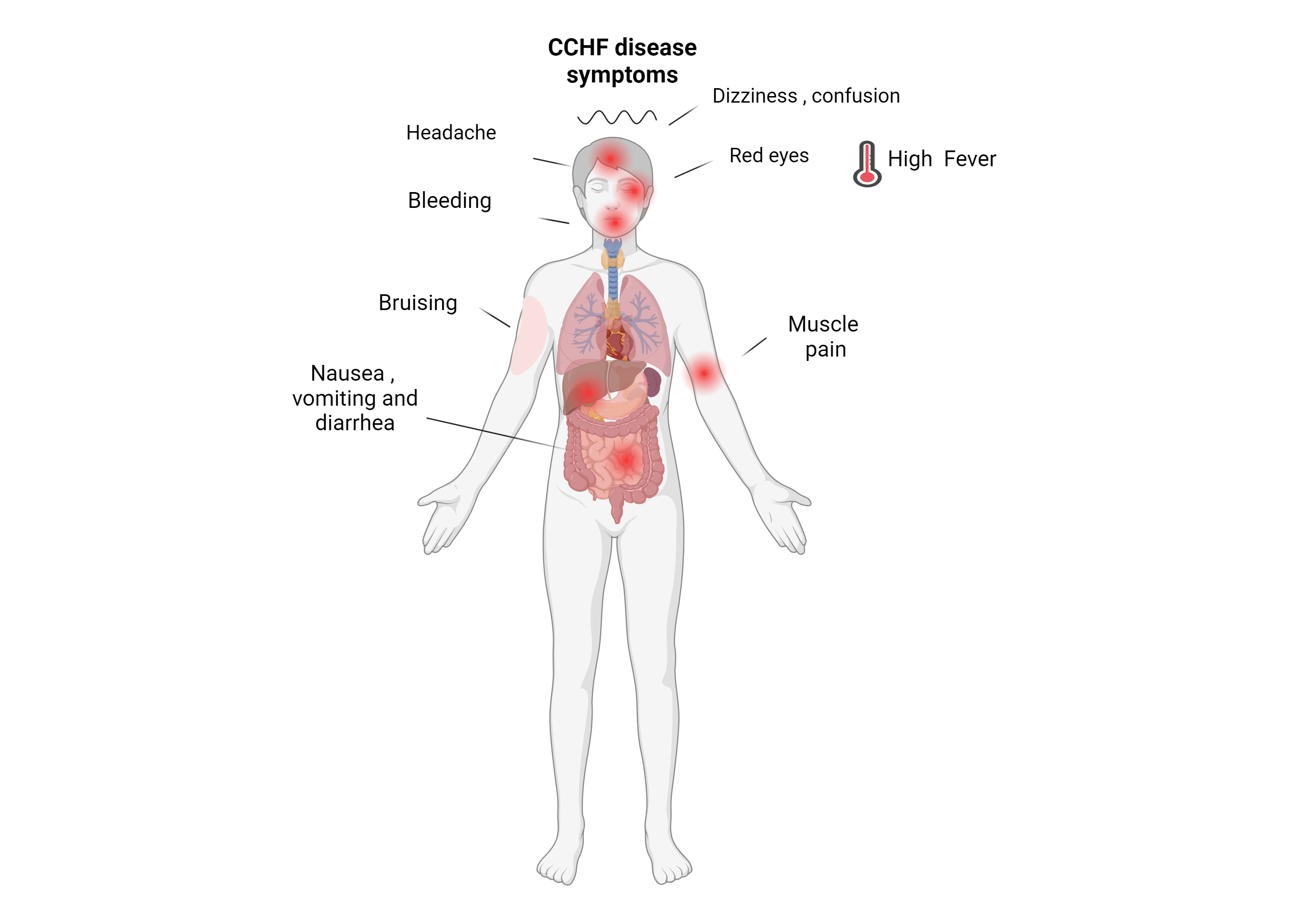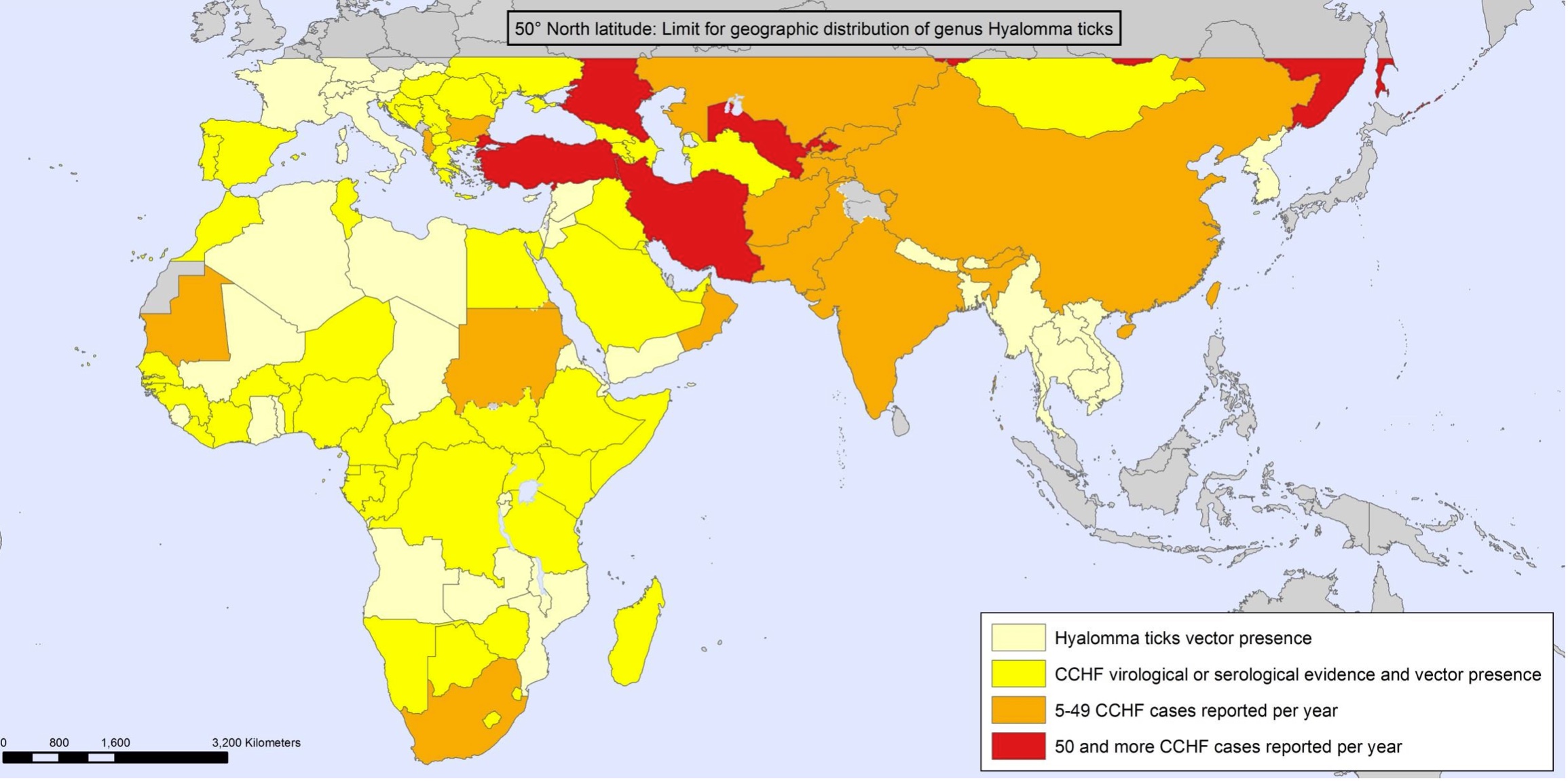Crimean-Congo hemorrhagic fever (CCHFV)

Hemorrhagic phase progression with bruising, nosebleeds, and bleeding at injection sites can be seen. Beginning 4 days after illness and lasting for about two weeks.
Other clinical signs include: tachycardia, lymphadenopathy, and a petechiae (a rash caused by bleeding into the skin) on internal mucosal surfaces, such as in the mouth and throat, and on the skin. Hepatitis, and severely ill patients may experience rapid kidney deterioration, liver failure or pulmonary failure after 5 days of illness.


The virus was first observed in Crimea in the 1940s and was later identified as the same agent of what had been called Congo Hemorrhagic Fever.
CCHFV is among the most widely distributed hemorrhagic fever viruses with cases reported through Africa, the Middle East, Asia, and Southern and Eastern Europe.
The fatality rate is typically between 10 and 40%, though fatalities as high as 80% have been observed in some outbreaks.
CCHF is on WHO’s priority list for Research and Development and the US National Institute of Allergy and Infectious Diseases (NIH/NIAID) priority A list, as a disease posing the highest level of risk to national security and public health.
The toolbox for this virus is currently in development. Please contact us via info@virusbankplatform.be for more information.